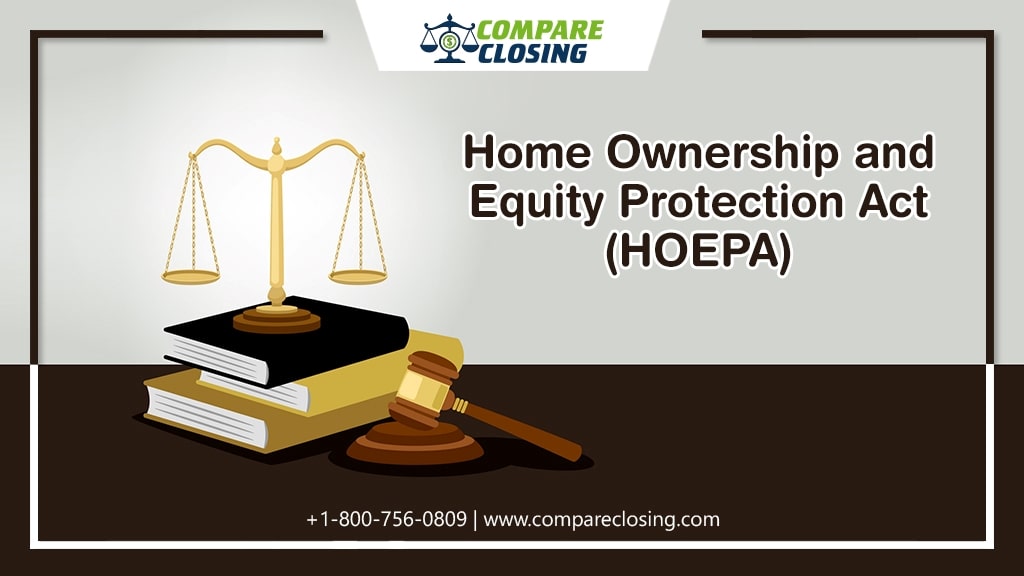Table of Contents
- What Are Netting Escrows & How Does It Work?: The Best Guide - January 2, 2024
- The Secret About Prescriptive Easement: Top Guide 1 Must Know - December 4, 2023
- About Home Equity Loans In Texas And How Can One Obtain It - November 27, 2023
Introduction to HOEPA
When you are buying a home, refinancing a mortgage, getting a home equity loan, or a HELOC it is important to know your rights as a consumer.
There are many laws and regulations that protect you as a borrower. One such act is Home Ownership and Equity Protection Act. In this post, we will dive deep to understand what is HOEPA in detail.
What Is HOEPA (Home Ownership and Equity Protection Act)?
Home Ownership and Equity Protection Act was incorporated in 1994 by President Bill Clinton and authored by Ted Kennedy. It was an amendment to TILA, the Truth in Lending Act.
HOEPA regulation is implemented so that homeowners with one to four units can be protected from irregular loan practices.
It is a very complicated piece of legislation that has many regulations and rules which almost took most of the lenders out of business when it was implemented in 1994. Many lenders refused to accept any loans for homeowners with one to four units.
Understanding HOEPA And Its Regulations
As Home Ownership and Equity Protection Act was implemented to protect borrowers from possible abuses regarding high-cost home loans, which are also known as section 32 loans.
HOEPA compliant loans have specific rules to follow.
The lenders taking applications on or after January of 2014 have to comply with the following regulations:
- Avoid specific home loan terms
- Borrowers to be provided with additional protection with counseling sessions as homeowners
- Providing more disclosures
The potential borrower should receive a list of homeownership counseling within three days from the date of application from the lender. The lender then must confirm stating that the borrower did receive the counseling.
High-cost loans such as mortgage refinance, home purchases, home equity line of credit, and home equity loans are types that fall under the coverage of the HOEPA act.
And loans such as new construction loans, reverse mortgages, USDA loans, and loans financed by HFA are the types of home loans that are exempted from the HOEPA coverage.
High-cost mortgages under the HOEPA act must have taxes and insurance escrowed in the monthly payments. There should not be any balloon payments for the loans.
The points and fees must not be financed into the loan. The interest rate should not increase in case of default. There should be no financing for any type of insurance.
Other Regulations May Also Include
Evaluating a borrower’s capacity to repay: Before giving a high-cost loan, the lender should completely audit the borrower’s funds, including credit, income, assets, and obligations.
Limitations based on conditions: The law confines balloon installments and due-on-sale regulations in most situations, and mortgage lenders can’t charge a prepayment penalty. There are constraints on late charges and a few different limitations.
Disclosures: In a high-cost loan, it is mandatory for the lender to provide a written disclosure to the borrower three days before closing on the mortgage.
Counseling: The borrower will need to complete homeownership counseling from a HUD-approved agency that covers budgeting, affordability, and disclosures.
What Is A High-Cost Loan?
High-cost mortgages are mortgages that meet specific Anual Percentage Rate (APR) and Average Prime Offer Rate (APOR)standards.
In a high-cost mortgage, the APR exceeds APOR by 6.5 percent or more on the first lien transaction, and when applied to a junior lien transaction the APR must be more than 8.5 percent above the applicable APOR.
The other things applicable in high-cost mortgages are that the resulting mortgage will have a pre-payment penalty if paid after 36 months of the closed date or is more than two percent of the prepaid amount, and also the mortgage lender/broker fees are applied which can get very confusing very fast.
Conclusion
As a consumer, it is important for you to know your rights to ensure good financial health when you are applying for any type of home loan.
Knowing about HOEPA and other acts will help you determine what is best for you before you make any major financial decision.
After all, getting any home loan product has a huge impact on your financial health.
Amanda Byford
Amanda Byford has bought and sold many houses in the past fifteen years and is actively managing an income property portfolio consisting of multi-family properties. During the buying and selling of these properties, she has gone through several different mortgage loan transactions. This experience and knowledge have helped her develop an avenue to guide consumers to their best available option by comparing lenders through the Compare Closing business.





